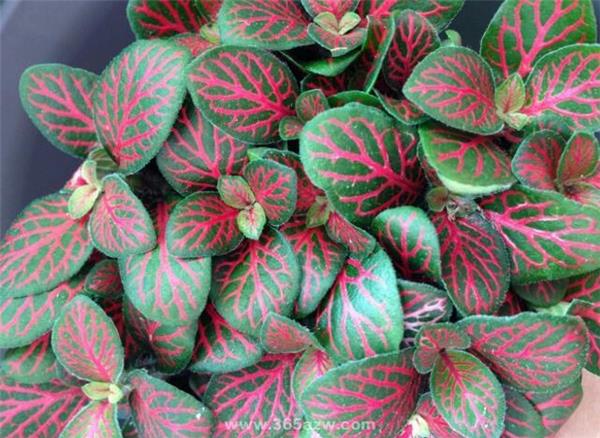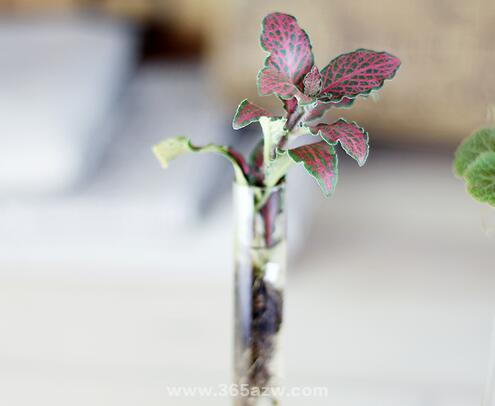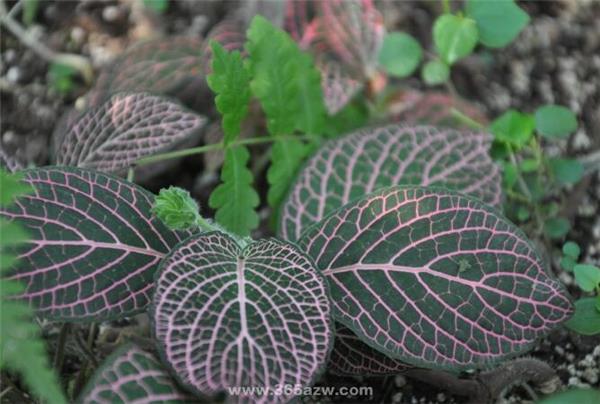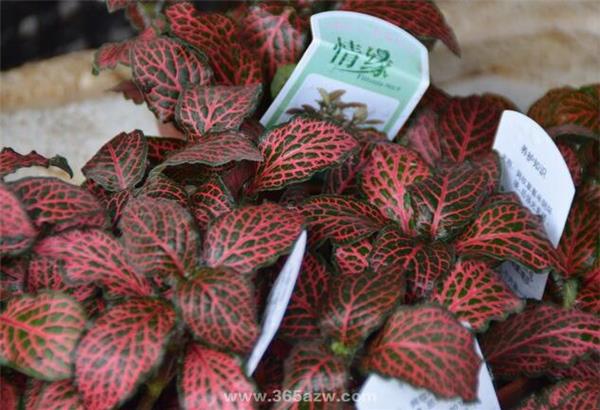Introduction to the Culture method of Red net Grass
The leaves of red reticulate grass are dark red, which has high ornamental value and is often planted as potted plants. What problems should be paid attention to in red reticulate grass culture? Next, I will introduce it to you in detail.
Morphological characteristics of Rabdosia mandshurica

Red reticulate grass is a perennial herb of the family Cerambycidae, which is creeping, straight-veined red, very clear, is the main ornamental character, its flowers are small, yellow, upright inverted inflorescences, more blooming from April to June. Native to Peru and South America in the tropical rain forest, like high temperature, high humidity and semi-shady environment, afraid of cold, fear of drought, but also afraid of waterlogging.
Cultivation techniques of Red net Grass
Basin soil selection
The planting basin of red reticulate grass should not be large, and the woof basin is better. The basin soil can be prepared with 1 part of peat, sand and rotten leaves, and the drainage layer should be laid at the bottom of the basin.
Watering
Red net grass usually watering should be wet rather than dry, not dry, but also do not cause stagnant water in the basin. The water should be properly controlled on cloudy and rainy days to make the basin soil a little drier. For the temporary lack of water leaves drooping, can be watered spray, and cover the bag humidification, can be restored, but after such repeated plants, the root system is damaged, after a little improper, the leaves will wilt.
Humidity

Red grass requires high humidity in the air and can be placed in places with high humidity such as the edge of the pool. When the climate is dry, you can also use a glass jar or plastic bag cover to prevent more contact with dry air to ensure higher air humidity, but when the temperature is high, you should not only shade, but also pay attention to opening and breathable.
Fertilizer application
Red reticulate grass is fertilized twice a month during the growing season.
Heat preservation in winter
After red reticulate grass is moved indoors in winter, it is necessary to keep the temperature not lower than 15 ℃, otherwise it is easy to die from freezing. During this period, watering should pay special attention to the water temperature, do not use water that is too low. In order to make the soil moist, it is best to cover it with plastic bags to keep warm, which is more beneficial to overwintering.
Disease control of red reticulate grass
Disease prevention and cure
Red net grass is often harmful to leaf rot and root rot.
Leaf rot: spray with 1000 times of carbendazim wettable powder.
Root rot: soak the roots with 1000 times of streptomycin to sterilize.
Pest control
Insect pests are shell insects, red spiders and snails. Scale insects and red spiders can be sprayed with 1500 times of 50% malathion and 2000 times of wettable powder, respectively. Snails can be caught manually or trapped by snails.
The function and use of red reticulate grass

Red reticulate grass leaves are fresh and beautiful, especially suitable for potted ornamental. Use it to put hotels, shopping malls, airport lounges, shop windows, halls, regardless of single or piece furnishings, can play a better effect. Potted plants or hanging pots are used for bedroom decoration, putting desks, coffee tables or windowsills, green and delicate, light and soft, making people feel fresh and comfortable. Lobular reticulate grass in Europe and the United States is also often used to make bottle scenery or box scenery to watch, but also unique.

The above is the introduction of red net grass culture, I hope it will be helpful to you.
Related
- Wuhan Hospital Iron Tree Blooming Result Was Instantly Frightened by the Gardener Master
- Which variety of camellia is the most fragrant and best? Which one do you like best?
- What is the small blue coat, the breeding methods and matters needing attention of the succulent plant
- Dormancy time and maintenance management of succulent plants during dormancy
- Minas succulent how to raise, Minas succulent plant pictures
- What are the varieties of winter succulent plants
- How to raise succulent plants in twelve rolls? let's take a look at some experience of breeding twelve rolls.
- Attention should be paid to water control for succulent plants during dormant period (winter and summer)
- Watering experience of twelve rolls of succulent plants
- Techniques for fertilizing succulent plants. An article will let you know how to fertilize succulent plants.



